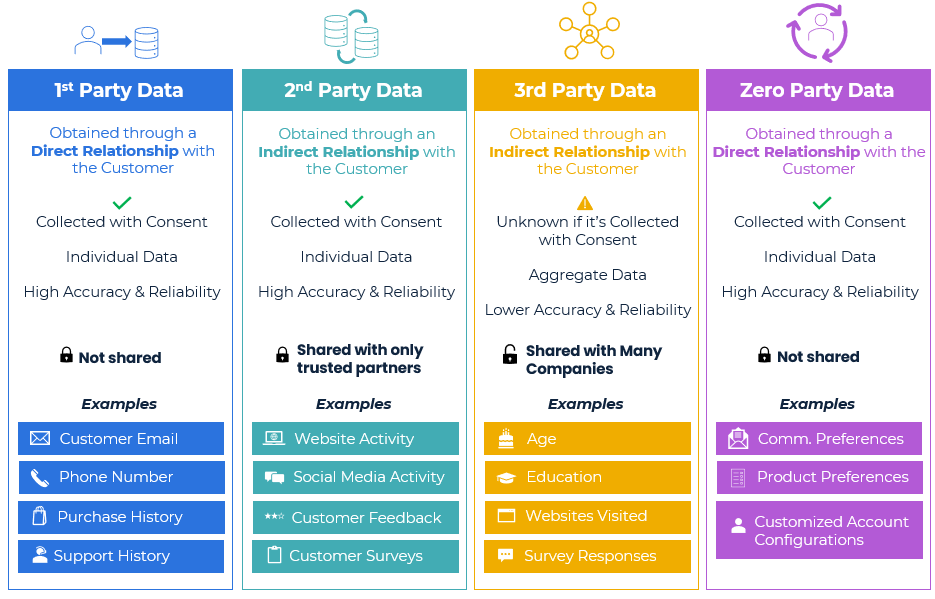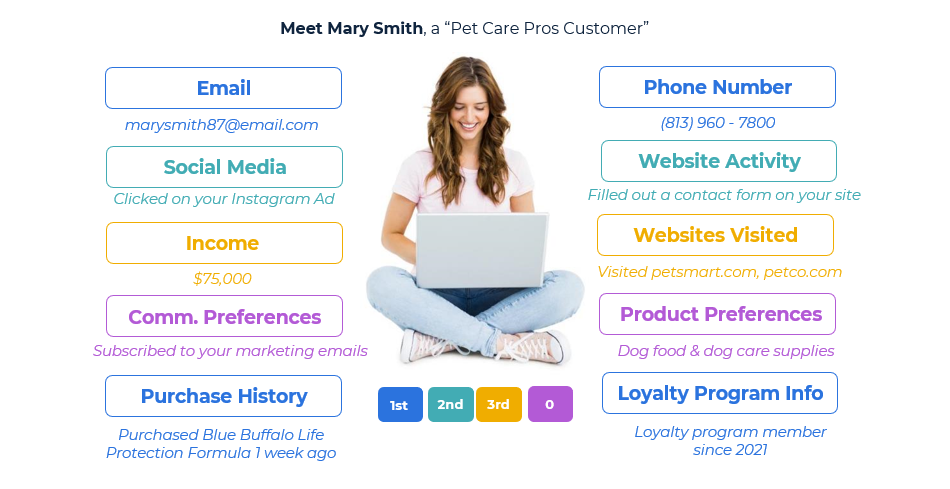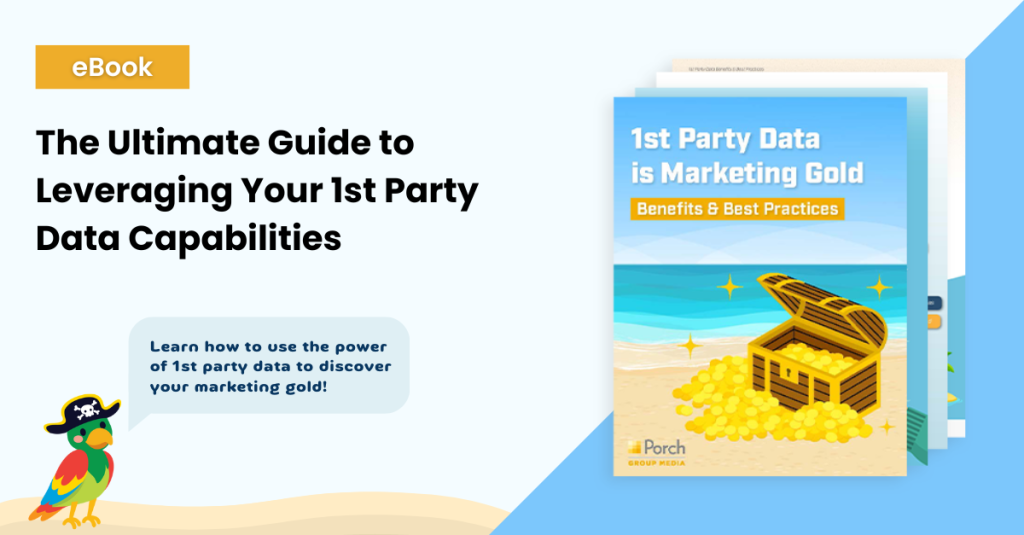In today’s data-driven world, businesses strive to understand and connect with their customers on a personal level. This connection goes beyond mere transactions; it’s about building meaningful relationships.
To achieve this, businesses must first understand their customers on an individual level – known as the Single Customer View (SCV) or 360-degree customer view. Who are they? What drives them to purchase?
The ultimate goal is to be able to target the right person, with the right message, at the right time. Which in turn, drives success in customer acquisition, up-sell, cross-sell, retention, and greater customer lifetime value.
What is a Single Customer View (SCV)?
At its core, a Single Customer View (SCV) is a comprehensive, unified, and real-time representation of an individual customer’s data from various touchpoints and interactions with a business.
It’s like creating a complete profile that captures every interaction, purchase, preference, and engagement a customer has with your brand, all in one place.
Five Benefits of Having a Single Customer View
1. Personalization
A single customer view empowers businesses to deliver highly personalized experiences.
According to research, 80% of consumers are more likely to buy from a company that provides a tailored experience. Additionally, 66% of consumers expect brands to understand their individual needs.
When you have a holistic view of a customer’s history and preferences, you can tailor your products, services, and marketing efforts to their individual needs and desires.
2. Seamless Customer Experiences Across Channels
A single customer view also ensures consistency across all touchpoints. Whether a customer engages with your brand through your website, mobile app, social media, or in-store, they should have a consistent and seamless experience.
The payoff is well worth the effort. In fact, 86% of buyers are willing to pay more for a great customer experience.
According to research from PWC, the more expensive the item, the more they are willing to pay. For example, customers are willing to pay a price premium of up to 13% (and as high as 18%) for luxury and indulgence services, when they receive a great customer experience.
A great experience can also influence on-the-spot purchasing – 49% of buyers have made impulse purchases after receiving a more personalized experience.
3. Improved Customer Service
Armed with a complete customer profile, customer support teams can provide more efficient service. They can anticipate needs, resolve issues faster, and leave customers feeling valued.
Research shows that 81% of people claim that receiving good customer service makes them more likely to make another purchase.
In fact, more than 60% of customers now expect companies to meet all of their needs and 61% of customers would leave for a competitor after just one negative experience.
4. Data-Driven Decision-Making
A single customer view enables data-driven decision-making. Businesses can analyze customer behavior and trends to make informed choices about product development, marketing strategies, and resource allocation.
According to Mckinsey Global Institute, data-driven organizations are 23 times more likely to acquire customers, six times as likely to retain customers, and 19 times more likely to be profitable.
5. Better Marketing Campaigns
With a clear picture of your customers, marketing efforts become more targeted and effective. You can create highly segmented and relevant campaigns, reducing marketing costs and improving ROI.
Segmented email campaigns can bring up to 760% revenue growth for companies. Additionally, 77% of marketing ROI comes from segmented, targeted, and triggered campaigns
How to Build a Single Customer View
Building an effective single-customer view requires several key steps:
- Data Integration: Collect and integrate customer data from various sources, such as CRM systems, e-commerce platforms, social media, and customer service interactions.
- Data Cleansing: Ensure data accuracy by removing duplicates, correcting errors, and standardizing data formats.
- Customer Identification: Implement customer identification methods to link data to specific individuals accurately.
- Data Security: Prioritize data security and privacy to protect customer information.
- Real-Time Updates: Keep your customer data updated in real-time to reflect the most recent customer interactions.
- Cross-Functional Collaboration: Establish collaboration between departments like marketing, sales, customer service, and IT to ensure all teams are inputting and using customer data correctly.
The Role of All Party Data in a Single Customer View
Many brands already have a wealth of data at their fingertips in the form of first-party data. When first-party data is integrated with other types of data sources, such as second, third, and even zero-party data, a truly holistic, single-customer view comes into focus.
What Is First-Party Data?
First-party data is the data collected directly from customers or users. It includes information such as contact details, purchase history, email engagement, browsing history, and more. This data is valuable because it is highly unique to each brand, providing a wealth of insights into its existing customer base.
What is Second-Party Data?
Second-party data is obtained through an indirect customer relationship (compared to first-party data, which is a direct customer relationship). This type of data is information the brand didn’t collect but is often obtained by working with a trusted partner who shares audience insights in a mutually beneficial relationship.
It may include activity on websites, apps, and social media, survey responses, and more. For example, consider consumers who book a hotel room. When they consent to other offers, they may be targeted with offers from local restaurants.
What is Third-Party Data?
Third-party data, on the other hand, is acquired from external sources such as data aggregators or data marketplaces. These sources can provide valuable demographic, interest, or intent data for brands to enrich their audience understanding. Using ethical data providers and ensuring compliance with privacy regulations is crucial when incorporating third-party data into marketing strategies.
What is Zero-Party Data?
Somewhat lesser known is zero-party data, which is data that a customer intentionally shares with a brand. This may be information such as preference center data, which would include a consumer signing up for a newsletter from a home improvement retailer and checking the interests they want to receive information on such as gardening and home remodeling.

And with all-party data, you can target the right person, at the right time, with the right message.

Conclusion
A Single Customer View (SCV) is more than just a buzzword; it’s a critical tool for businesses seeking to build lasting customer relationships, deliver outstanding experiences, and stay competitive in a data-driven world. By unifying customer data and implementing an all-party data strategy, businesses can gain insights, enhance personalization, and ultimately win customer loyalty. As technology evolves, so does the potential of the single-customer view, offering businesses the opportunity to connect with customers in more meaningful ways than ever before.





